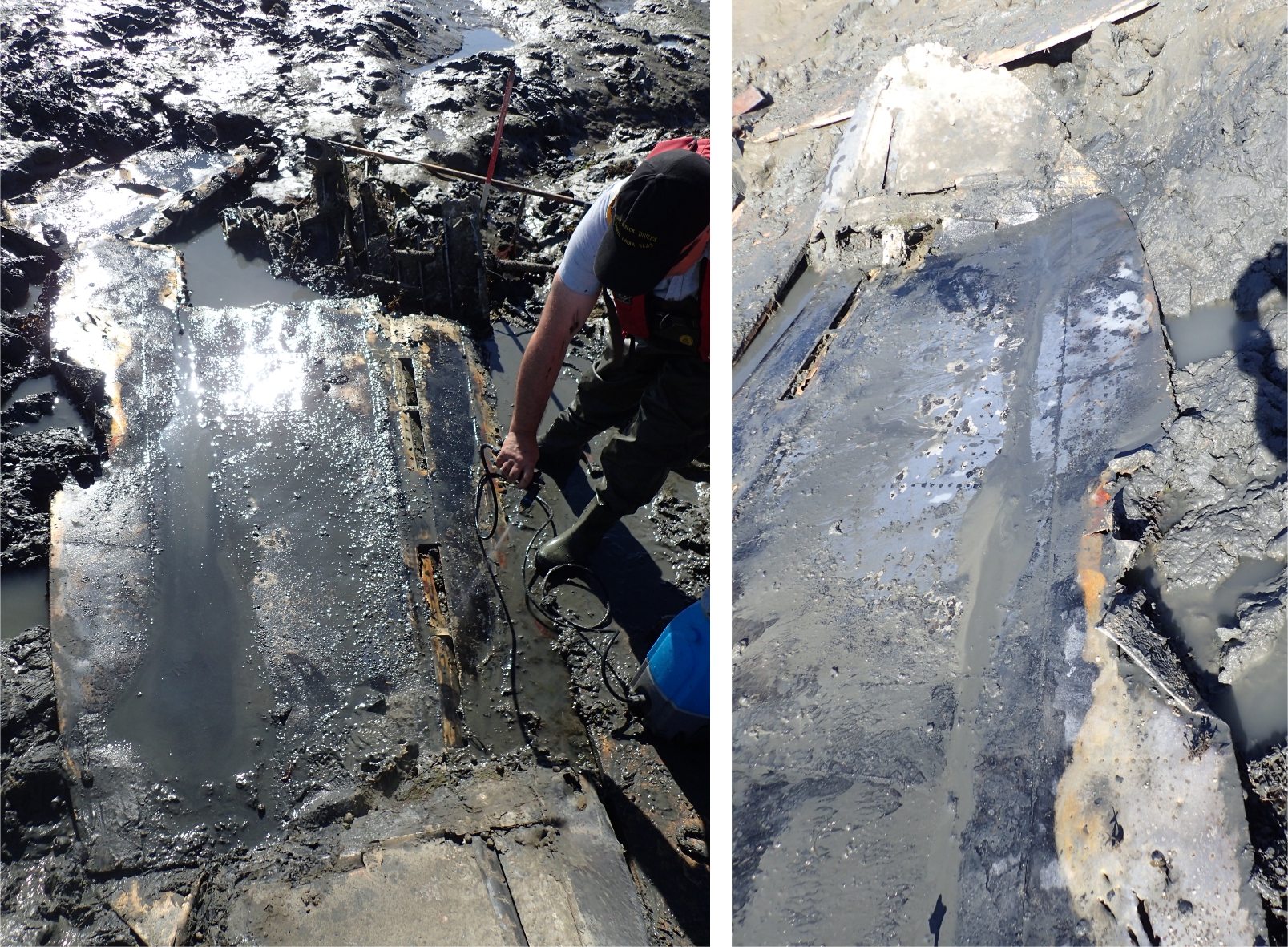In July, an aircraft wing was reported through Fishing Industry Protocol for Archaeological Discoveries (FIPAD) in the mud of Chichester Harbour. In order to identify it, permission was recently granted by the Ministry of Defence for a photographic and recording survey.
Due to the hazardous nature of the harbour mud, Adrian Karn (Deputy Harbour Master) with the assistance of Lawrence Smaller (Patrol Assistant), took Maddy Fowler and myself out to the site on one of Chichester Harbour Conservancy’s boats. They kindly supplied and assisted with a small pressure washer and mud boards. We were met at the site by the finder, Chris Berners-Price, who provided us with much appreciated tea and biscuits from his boat whilst we worked.
Using the pressure washer and brushes, Adrian and I made short work of cleaning off the wing while Maddy recorded the details. Meanwhile, Lawrence photographed another possible aircraft related feature further out on the mud for us. The wing was then photographed and recorded with the tide fast turning and the site gradually getting wetter.

What we found was the badly damaged and truncated outer 3 m of a wing, with an aileron (French for ‘little wing’) and trim tab (these are the hinged flaps on the back edge of the wing, used to change direction) attached, and an Airborne-Surface-Vessel (ASV) radar aerial. These were identified as coming from a Lockheed Hudson, which possibly had been previously salvaged for an engine in the early 1970s. Research is ongoing into the identity of the plane as there are four or possibly five Hudsons reported as crashed in the area. What we do know from the wing remains, is that this Hudson was probably part of a Coastal Command squadron whose aircraft had been fitted with ASV for detecting surface vessels, in particular submarines; no other military service having ASV equipped Hudsons. The submarines would have been detected while running on the surface charging their batteries, or attempting to transit the narrow coastal waters of the Channel and North Sea, in the shortest possible time, under cover of darkness.